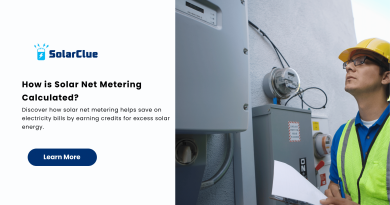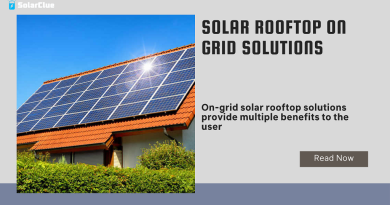How To Connect Solar Panels?
Proper wiring of solar panels is crucial for optimal performance and safety. This blog covers the basics of series and parallel connections, the use of junction boxes and combiners, and the process of connecting panels to inverters or charge controllers. Step-by-step instructions are provided, emphasizing safety precautions and the use of appropriate tools and equipment.
Table of Contents
- 1 Understanding Solar Panel Wiring Basics
- 2 Series and Parallel Connections: Advantages and Disadvantages
- 3 Using Junction Boxes and Combiners for Efficient Wiring
- 4 Connecting Solar Panels to Inverters or Charge Controllers
- 5 Safety Guidelines for Solar Panel Installation
- 6 Troubleshooting Common Wiring Issues
- 7 Optimizing Solar Panel Connections for Maximum Power Output
- 8 The Importance of Professional Installation for Complex Systems
- 9 FAQs
Understanding Solar Panel Wiring Basics
Voltage and Current
- Voltage (V): The electrical potential difference between two points.
- Current (I): The flow of electric charge.
Importance of Proper Wiring
- Ensures efficient power output.
- Prevents potential hazards such as short circuits and overheating.
Series and Parallel Connections: Advantages and Disadvantages
Series Connections
Concept
- Connecting solar panels end-to-end.
- Positive terminal of one panel to the negative terminal of the next.
Advantages
- Increases voltage.
- Suitable for long-distance power transmission.
Disadvantages
- Shading or damage to one panel affects the entire string.
Parallel Connections
Concept
- Connecting all positive terminals together and all negative terminals together.
Advantages
- Increases current.
- Shading or damage to one panel does not affect the others.
Disadvantages
- Requires more cables.
- Voltage remains the same.
Series-Parallel Connections
- Combines series and parallel methods.
- Balances voltage and current for optimal performance.
Using Junction Boxes and Combiners for Efficient Wiring
Junction Boxes
- Used for connecting multiple solar panels in series or parallel.
- Protects connections from environmental factors.
Combiners
- Combines multiple strings of solar panels into a single output.
- Includes fuses or circuit breakers for safety.
Connecting Solar Panels to Inverters or Charge Controllers
Equipment Needed
- Solar panels
- Inverter or charge controller
- Junction boxes
- Combiners
- Wiring cables
- Safety gear (gloves, goggles)
Step-by-Step Instructions
Connecting Panels in Series
1. Identify Terminals: Locate the positive and negative terminals on each panel.
2. Connect Panels:
Connect the positive terminal of the first panel to the negative terminal of the second panel.
Continue connecting additional panels in the same manner.
3. Connect to Junction Box: Connect the series string to a junction box.
Connecting Panels in Parallel
1. Identify Terminals: Locate the positive and negative terminals on each panel.
2. Connect Panels:
Connect all positive terminals together.
Connect all negative terminals together.
3. Connect to Junction Box: Connect the parallel strings to a junction box.
Connecting to Inverter or Charge Controller
Connect Junction Box to Combiner: Use appropriate cables to connect the junction box to a combiner.
Connect Combiner to Inverter/Controller:
- Connect the positive output of the combiner to the positive input of the inverter/charge controller.
- Connect the negative output of the combiner to the negative input of the inverter/charge controller
Connect Inverter to Load/Battery: Connect the output of the inverter to the load (e.g., appliances) or battery storage system.
Safety Guidelines for Solar Panel Installation
1. Wear Safety Gear: Always wear gloves and safety glasses.
2. Turn Off Power: Ensure all equipment is turned off before making connections.
3. Avoid Wet Conditions: Ensure the work area is dry to prevent electric shocks.
4. Use Proper Tools: Use insulated tools to prevent accidental shorts or shocks.
5. Double-Check Connections: Ensure all connections are secure and correctly oriented.
Troubleshooting Common Wiring Issues
No Power Output
- Check Connections: Ensure all connections are secure.
- Test Components: Use a multimeter to check voltage at various points in the system.
Low Power Output
- Inspect Panels: Check for shading or dirt on panels.
- Check Wiring: Ensure there are no loose or damaged wires.
Overheating Components
- Adequate Ventilation: Ensure proper ventilation for all components.
- Correct Sizing: Make sure components are properly sized for the system’s power output.
Optimizing Solar Panel Connections for Maximum Power Output
1. Panel Placement: Install panels at the optimal angle and orientation for maximum sunlight exposure.
2. Regular Maintenance: Clean panels regularly and check for any obstructions.
3. Efficient Inverters/Controllers: Use efficient inverters and charge controllers to improve performance.
4. Proper Wiring: Use the appropriate gauge wires to minimize power loss.
The Importance of Professional Installation for Complex Systems
- Expertise: Professionals have the knowledge and experience to design and install efficient solar systems.
- Safety: Professionals adhere to safety standards, reducing the risk of accidents.
- Warranty: Professional installations often come with warranties for added security.
Comparison Table of Connection Types
| Connection Type | Voltage Increase | Current Increase | Suitable Applications | Advantages | Disadvantages |
|---|---|---|---|---|---|
| Series | Yes | No | Long-distance power transmission | Fewer cables needed, easy to install | Shading/damage affects entire string |
| Parallel | No | Yes | High-current applications | Shading/damage doesn’t affect other panels | Requires more cables, complex wiring |
| Series-Parallel | Yes | Yes | Balancing voltage and current | Balances system performance | More complex to design and install |
Conclusion
Properly connecting solar panels is essential for maximizing system performance and ensuring safety. By understanding the basics of series and parallel connections, using junction boxes and combiners, and following safety guidelines, you can effectively install and optimize your solar panel system.
FAQs
1. What is the difference between series and parallel connections?
Series connections increase voltage, while parallel connections increase current.
2. Why is proper wiring important for solar panels?
Ensures efficient power output and prevents potential hazards.
3. What tools are needed for connecting solar panels?
Insulated tools, multimeter, wiring cables, and safety gear.
4. Can I install solar panels myself?
Yes, if you follow safety guidelines and have basic electrical knowledge. For complex systems, consider professional help.
5. How can I optimize my solar panel connections?
Proper panel placement, regular maintenance, efficient inverters/controllers, and appropriate wiring gauge.




